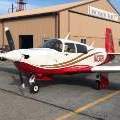Steep Turn Base to Final
-
Members Online
- Hall Liu
- Art21
- ad5ut
- CaptainBen
- LP1
- bluehighwayflyer
- Crawfish
- takair
- Justin Schmidt
- Stealth Mooney
- Schllc
- jetdriven
- 201Mooniac
- Navy79
- GoDemonDeacons
- 47U
- EricJ
- 201er
- 1980Mooney
- exM20K
- rbmaze
- DonMuncy
- jamesm
- ijs12fly
- 00-Negative
- ElkoRandy20J
- CL605
- Jeff Uphoff
- Bob Weber
- George518
- jghyde
- tbl524
- Mister_Bevilaqua
- Elijah


Recommended Posts
Join the conversation
You can post now and register later. If you have an account, sign in now to post with your account.